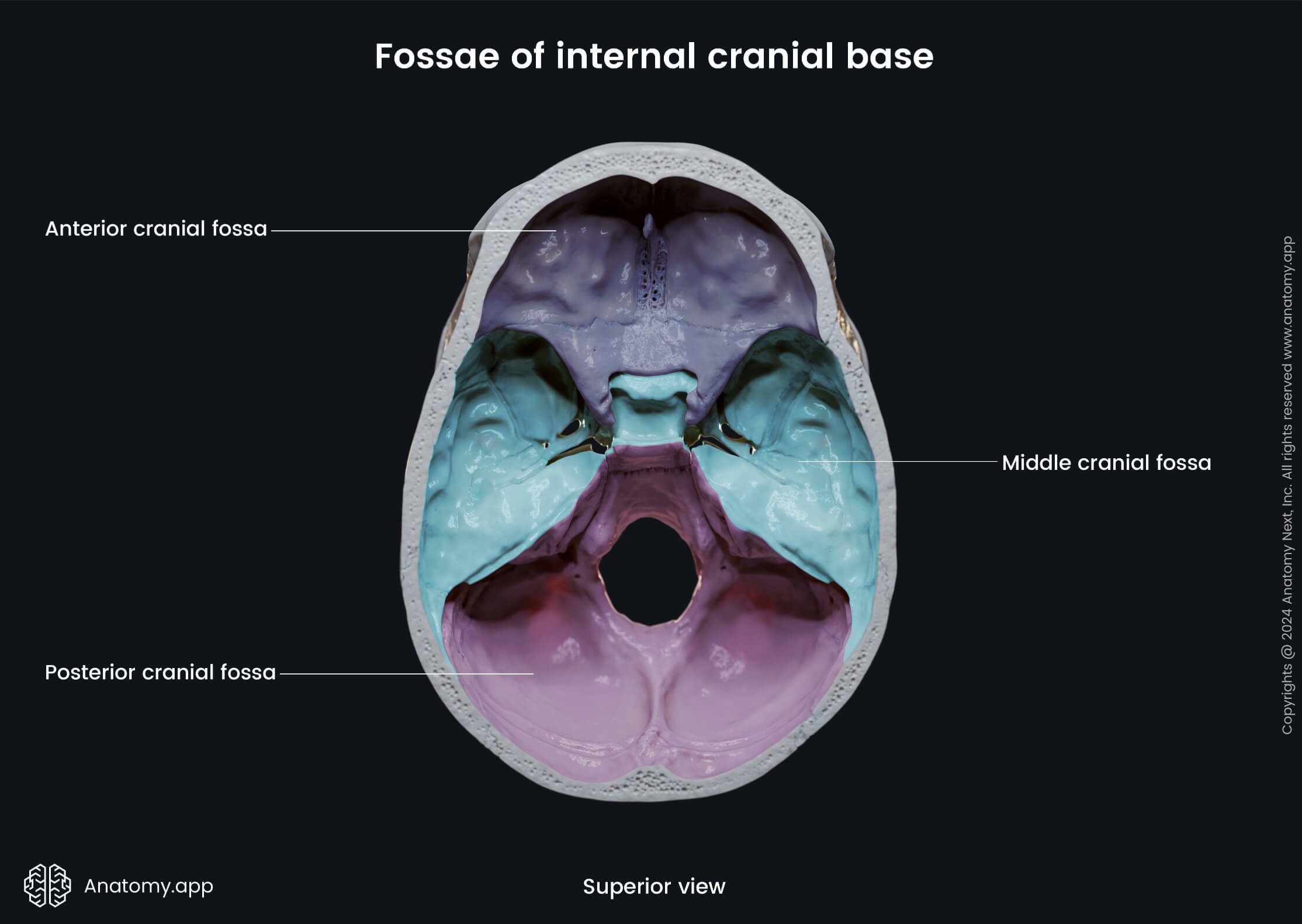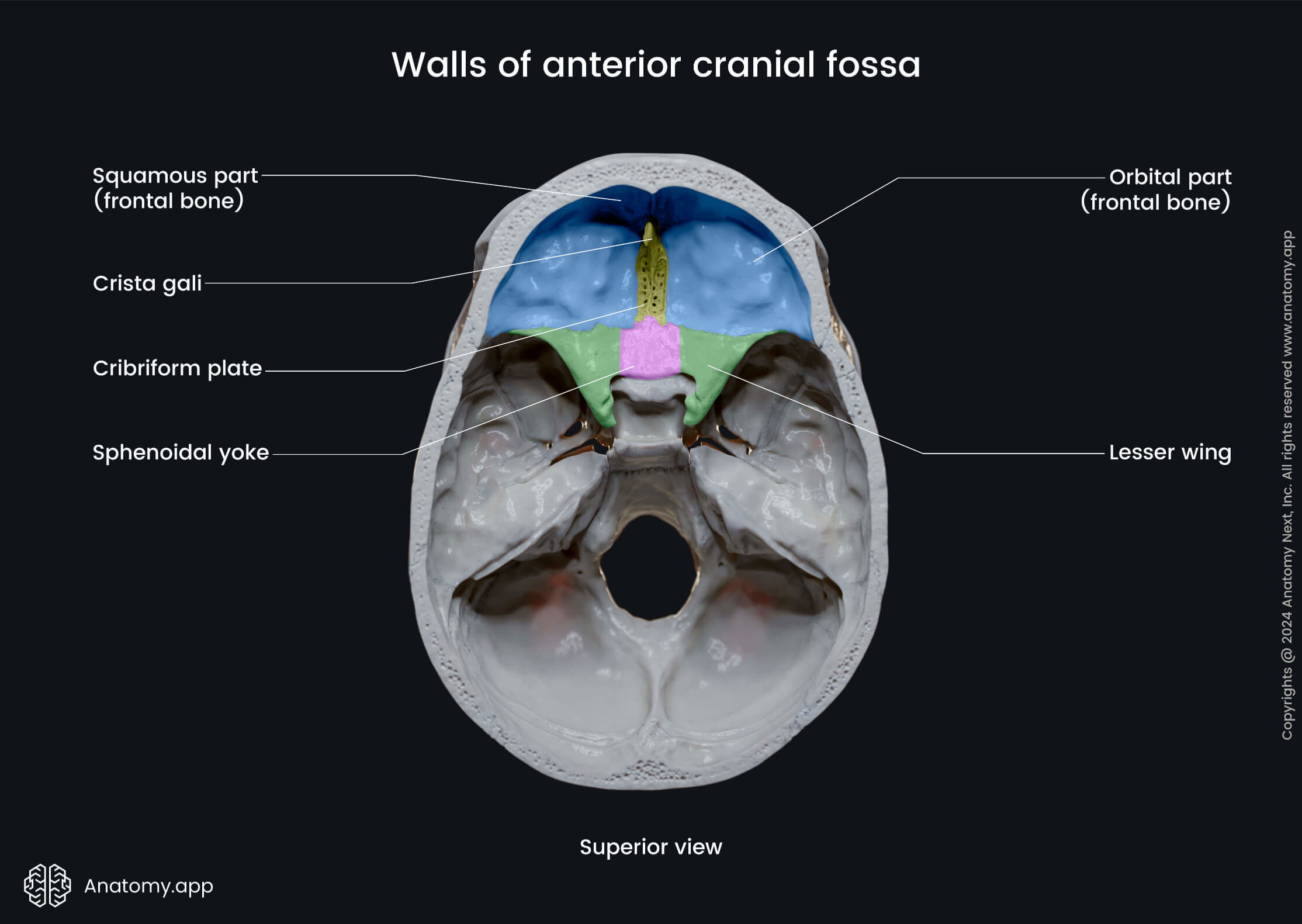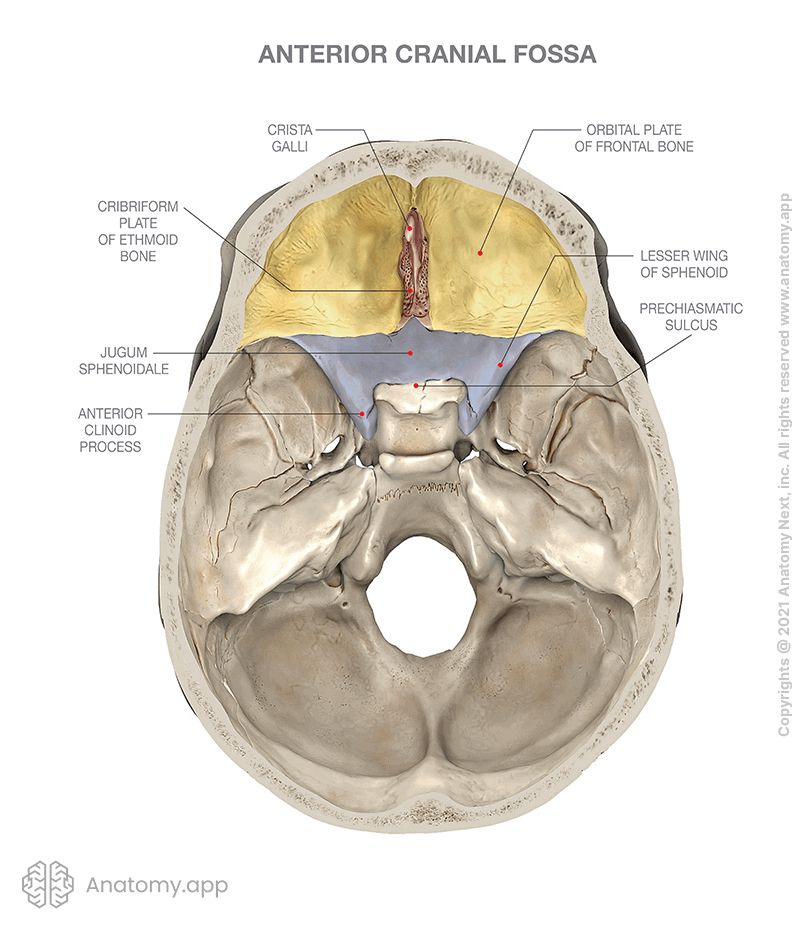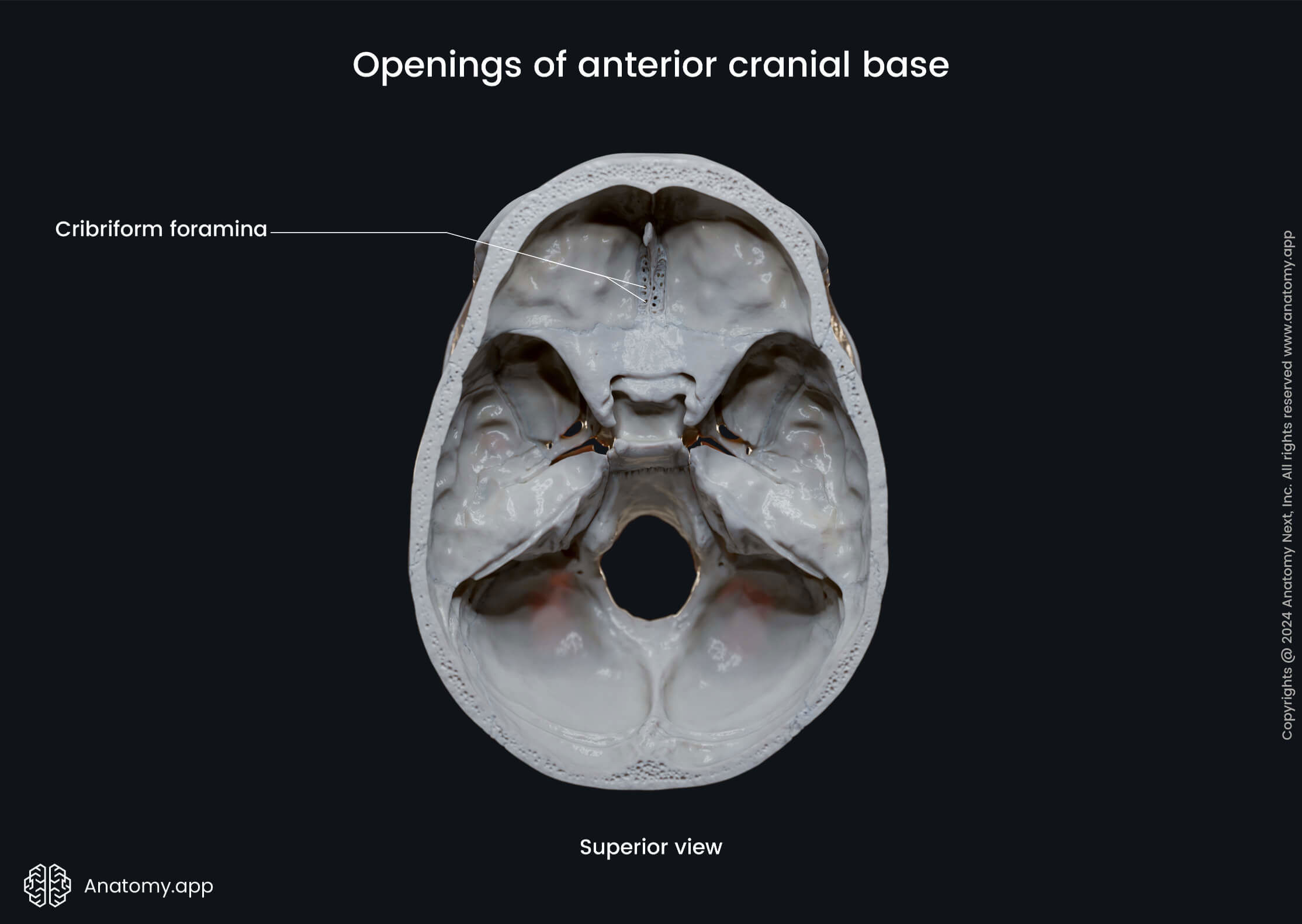- Anatomical terminology
- Skeletal system
- Skeleton of trunk
-
Skull
- Neurocranium
- Viscerocranium
- Auditory ossicles
- Sutures of skull
- Topography of skull
- Skeleton of upper limb
- Skeleton of lower limb
- Joints
- Muscles
- Heart
- Blood vessels
- Lymphatic system
- Nervous system
- Respiratory system
- Digestive system
- Urinary system
- Female reproductive system
- Male reproductive system
- Endocrine glands
- Eye
- Ear
Anterior cranial fossa
The anterior cranial fossa (Latin: fossa cranii anterior) lies at the highest level of the internal cranial base and is formed by the cribriform plate of the ethmoid bone, orbital plate of the frontal bone, and lesser wings of the sphenoid.


Borders of anterior cranial fossa
The borders of the anterior cranial fossa are marked by the following structures:
- Anteriorly and laterally - inner surface of the frontal bone;
- Posteromedially - limbus of the sphenoid bone;
- Posterolaterally - lesser wings of the sphenoid bone;
- Inferiorly - orbital plate of the frontal bone, cribriform plate and crista galli of the ethmoid bone, anterior aspects of the body and lesser wings of the sphenoid bone.



Contents of anterior cranial fossa
The anterior cranial fossa contains the following parts of the brain:
- Frontal lobe of the cerebral cortex
- Olfactory bulb
- Olfactory tract
- Orbital gyri
Openings of anterior cranial fossa
There are several openings connecting the anterior cranial fossa with other parts of the skull, and these are the following:
- Anterior ethmoidal foramen
- Cribriform foramina (foramina of the cribriform plate)
The paired anterior ethmoidal foramen connects the anterior cranial fossa with the orbit on both sides. This opening transmits the anterior ethmoidal nerve (arises from the nasociliary nerve, which is a branch of the ophthalmic nerve (CN V1)) and the anterior ethmoidal artery and vein.
The cribriform foramina are numerous tiny openings or perforations in the cribriform plate of the ethmoid bone, therefore, they are also known as the foramina of the cribriform plate. These openings connect the anterior cranial fossa with the nasal cavity and transmit the olfactory nerves (CN I).
